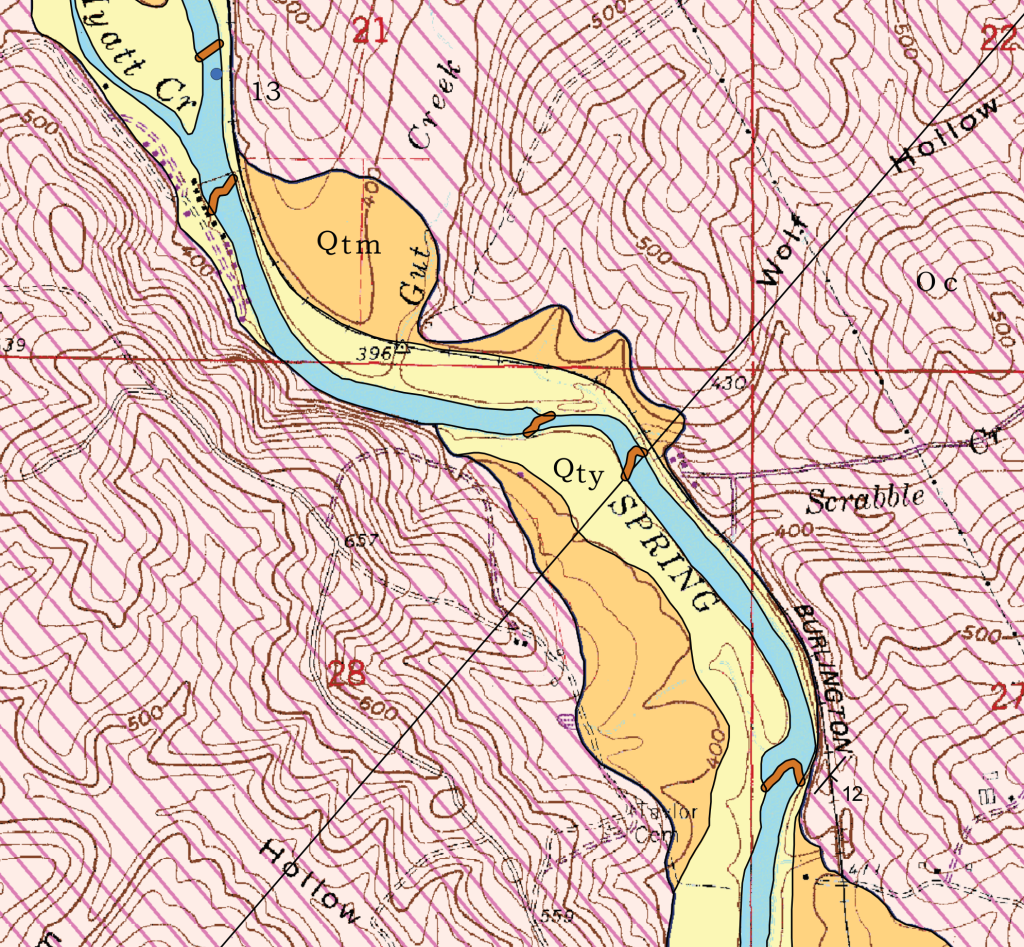Why are geologic maps important?
The answer cannot be stated any better than the following:
“The first geology map was prepared to solve practical problems involving the distribution of different types of rocks at and near the Earth’s surface, and that is still the reason geologic maps are made today. Uses of geology maps first expanded into exploration for natural resources, including minerals and petroleum. As an example, during World War II, maintaining the supply of strategic minerals became so critical that geologists in the U.S. military were assigned to make geologic maps for mineral exploration.”
“Most building materials, except wood, are from various specific rocks and rock products. The suitability of rocks and unconsolidated surficial materials to support foundations is essential for construction of homes, skyscrapers, dams, bridges, or simply a road. Rocks and unconsolidated surficial materials fundamentally affect the nature of the soil cover and plant growth is related to soil type.” (Thomas, 2004)
And don’t forget, we are all familiar with spectacular natural disasters, such as earthquakes, volcanoes, storms, and floods! What’s in a geologic map?

This map is a detail from a larger map, the Geologic Map of the Stuart Quadrangle in northeast Arkansas. This geologic map shows which rock formations and alluvial deposits are exposed at the surface as well as water sample sites, travertine dams, and the orientation of inclined bedding.
The orange and yellow colors (Qty and Qtm) represent alluvium in the form of terraces that were deposited by the Spring River. The brown squiggly lines (Qcd) crossing the Spring River represent travertine dams (Qcd). Travertine dams are made up of the same material as cave deposits, calcium carbonate. They are an important feature to highlight on the map because they can erode and become undercut causing them to become a hazard. The pink patterned color represents the Cotter Formation (Oc). The blue dot near the top of the map labeled “13” represents a water sample site. The symbol at the end of the word “BURLINGTON” is a strike and dip symbol. This symbol indicates that beds of the Cotter Formation at this location are dipping 12 degrees to the southeast.
If you are interested in geologic maps published by the OSG and want to learn more about our mapping program, then visit the link provided below:
https://www.geology.arkansas.gov/geology/arkansas-geological-mapping-program.html
For a full listing of our geologic maps, please visit:
https://www.geology.arkansas.gov/maps-and-data/geologic-maps.html
Reference:
Thomas, W. 2004, Meeting challenges with geologic maps: American Geological Institute Awareness Series.
